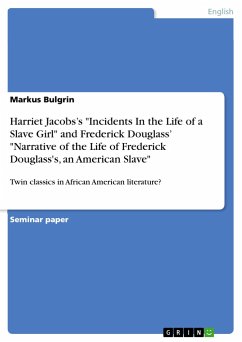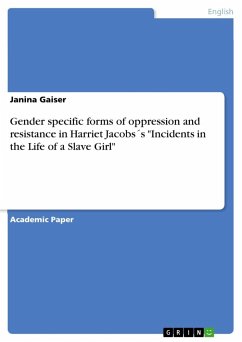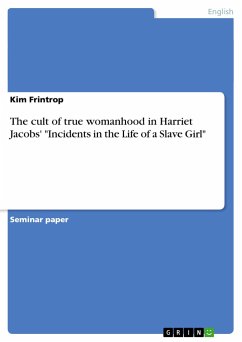Seminar paper from the year 2006 in the subject English Language and Literature Studies - Culture and Applied Geography, grade: 1,3, University of Heidelberg (Anglistisches Seminar), course: PSII: Captivity Narratives, language: English, abstract: Besides the virtual extermination of the native Indian population it is the brutal and dreadful treatment of Afro-American slaves in the 19th century which depicts some of the darkest and saddest chapters in the history of the United States. Still today the vestiges of slavery can be felt. Frederick Douglass's Narrative of the Life of Frederick Douglass, an American Slave (1845) and Harriet Jacobs's Incidents in the Life of a Slave Girl (1861) are two autobiographies, written by two former slaves, who succeeded in escaping slavery and all its inexpressible cruelties. They are considered two of the most influential, and groundbreaking works of the Antebellum Period, which bear witness to slavery in the United States. These two narratives "that have become twin classics in African American literature course" (cf. Boesenberg 1999: 121), shall be compared, discussed and analysed in this paper. However, Boesenberg's classification of the texts as "twin classics" could be misread and give rise to misinterpretation, as it may not be the most fitting term. Twins are widely thought of being almost the same. One might argue that this is not entirely true for Jacobs's and Douglass's narratives.The aim of this paper will be to point out some crucial similarities and differences between Douglass's and Jacobs's autobiographies. The first part of the paper briefly introduces some important similarities of the two narratives. In a second part focus will be given to distinctive features of these texts: family ties, gender difference, sexual exploitation, and manhood and womanhood. In a third part the motif of literacy and its meaning for the author's liberation will be discussed. The conclusion summarizes the preceded chapters and critically disputes Boesenberg's statement of the twin classics.








